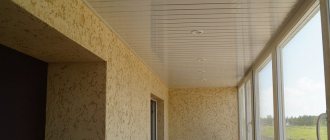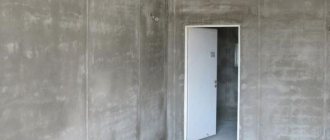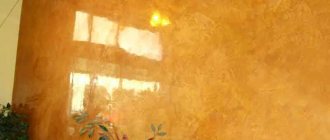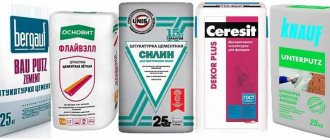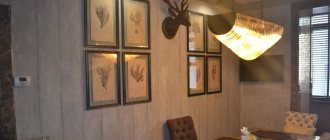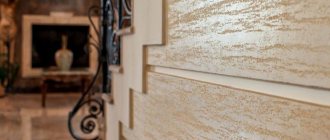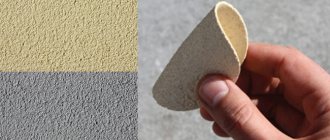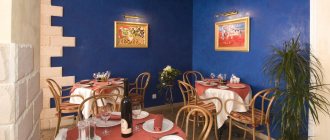Penoplex refers to a new formation of heat insulator, presented in the form of a slab of extruded polystyrene foam. Its main difference from conventional PPS is its higher density, strength and fire resistance. Its excellent thermal insulation qualities allow you to significantly save on space heating. In this article we will talk in more detail about finishing walls with penoplex plaster.
Features of penoplex
Synthetic foam products from polystyrene have been made for a long time, for more than 70 years. Penoplex differs from traditional boards in its production technology, which uses extrusion. Blowing agents are initially added to the polymer, which ensures uniform distribution of cavities throughout the mass. As a result, after extrusion, a structure with closed microscopic cells is formed, the size of which does not exceed 0.2 mm.
The main qualities of the slabs are as follows:
- low density;
- light weight;
- well-defined ability to retain heat;
- minimal tendency to absorb moisture.
Despite all its advantages, the material requires increased attention due to its high flammability and poor vapor permeability. Penoplex must be used correctly, taking into account the need to ensure good ventilation of the walls and the need for particularly strict adherence to fire safety rules. To protect from external influences, plaster is applied to the penoplex.
Pros and cons of facade insulation with penoplex
Main advantages of the material:
- low thermal conductivity (thermal conductivity coefficient 0.03 W/mºK)
- resistance to compression and the ability to withstand mechanical loads, thanks to the homogeneous structure of the material, where pores are evenly distributed, increasing the strength of the heat insulator;
- low water absorption (0.2 - 0.4% of the volume in 24 hours with full immersion);
- withstands a wide temperature range: from -50 to +75 degrees;
- resistance to mold and rot;
- fire resistance;
- good soundproofing qualities;
- light weight of the material - easy transportation;
- ease of installation, installation of the plates is possible by one person. Standard dimensions of penoplex: width 600 mm, length 1200 mm, thickness from 20 to 100 mm;
- versatility, the ability to insulate any building elements: walls, base, foundation, roof, floor;
- safe, does not emit toxic substances;
- long service life, subject to proper use of at least 50 years.
The disadvantages of the material include:
- low vapor permeability (0.007-0.008 mg/m h Pa). When using the material indoors, good ventilation must be ensured to prevent condensation and mold. It is also impossible to insulate aerated concrete without internal vapor barrier of the walls.
- high price - about twice as expensive as polystyrene foam and mineral wool.
Due to its heat-saving qualities and ease of installation, penoplex has become widespread and is increasingly used for insulation of buildings, displacing conventional polystyrene foam.
Why plaster
Plastering is a necessary part of the finishing work, allowing you to safely invest in thermal insulation without fear of its destruction in the future.
External plaster protects the facade from wind and precipitation that can cause damage to the material. The inner plaster layer on extruded polystyrene foam can serve as an additional decorative finish.
Penoplex is a durable polymer, however, under strong local mechanical loads, dents can form on it, which can lead to cracking on the sheets. If the coating is plastered, its resistance to impacts will increase, and an additional layer of protection for the synthetic board from UV rays will appear.
Thermal insulating coating made from foam sheets has joints that are usually sealed with polyurethane foam. To form a perfectly flat surface and protect the seams from aging, plaster must be applied on top of the sheets and seams.
Required tools and materials
In order for the matter to proceed easily and quickly, you need to think through everything in advance, collect the necessary materials, aids, and tools.
There are different brands of plaster mixtures and priming agents that have a similar basic composition, which does not exclude the presence of small features in the nature of impurities. To decorate a wall or a room as a whole, it is advisable to stock up on a sufficient amount of material from one manufacturer. This will eliminate the possibility of incompatibility of mixtures; they will work perfectly with each other.
Advice! Prepare equipment for mixing the plaster mixture in advance. There are many options: from an ordinary long wooden spatula or spatula to a drill with a special attachment. Choose good, comfortable spatulas with an ergonomic handle that allows you to easily move them along the plane.
To improve the adhesion of penoplex to the paste-like mass of plaster, the surface is treated with a metal brush or a needle roller. Roughness will improve adhesion and ensure reliable adhesion of the composition to the insulation.
Finishing outside corners requires special perforated corners and levels to ensure proper installation. You definitely need to buy a reinforcing mesh, without which all the work becomes meaningless. In some places you will need glue to fix it. Study the composition and recommendations for use in advance. To grout the surface, you need to purchase a plastic grater with sandpaper. It is convenient to carry out the final finishing with a roller with a small dense pile.
Primary layer sketch
Plastering the walls using penoplex from the outside is applied using reinforcing mesh. In this case, the plaster and adhesive composition should be both under the mesh and on top. The application technology should be followed step by step:
- First, the surface is lined out and treated with a compound.
- Then the mesh is applied and strengthened.
- Smooth out with a spatula so that the solution appears through the cells. The plaster should be evenly distributed over the surface, and the mesh should be completely immersed in the composition.
- After finishing the work, the surface is dried.
After a day, the walls need to be leveled using a special grater.
Types of mixtures
Penoplex plaster for the facade requires strength; it should not change under the influence of precipitation. There are compositions for universal and specific purposes. When choosing, you should take into account all possible types of loads on the coating.
Multifunctional tools
The universal composition can be used at several stages of finishing work. With this plaster you can attach penoplex to the wall, then fix the reinforcing mesh on the outside on the sheets. The universal mixture can not only be used for plastering, but also for pre-priming surfaces. The product costs a little more than formulations with strictly targeted action. The higher price is compensated by the possibility of multifunctional use.
Mineral products
A cement mixture that contains sand and a small amount of polymer filler, which improves the fixation of the material on the surface, is popular among craftsmen. Often such plaster is called mineral due to the predominant amount of inorganic components. The mixture must be prepared in accordance with the manufacturers' recommendations, which often contain instructions on the need to add PVA glue to the mixture. If the accompanying documents do not specify the introduction of additional components, there is no need to do this yourself. Some plasters contain gypsum and stabilizers. Such mixtures are very plastic and stick to the penoplex more slowly.
If you don’t have enough money to purchase ready-made plaster, you can make your own compositions from two components:
- cement and lime;
- clay and lime;
- clay and cement;
- clay and gypsum.
This is not the best solution, especially since the type of clay is fundamental to the quality of the plaster. If you have suitable clay, high-quality cement and slaked lime, the mixture can turn out quite successful. Mineral compositions can be used to plaster facade insulation on the outside and putty penoplex indoors.
Acrylic
Mixtures based on acrylic polymers are intended primarily for finishing areas located in areas of high humidity and high mechanical loads. The cost of polymer plasters is higher than that of mineral compounds, but their greater resistance to external influences justifies the difference in price. Acrylic plaster masses have great elasticity, which makes them easier to work with.
Silicate
A successful combination of properties is demonstrated by silicate plasters, which do not contain polymer additives and therefore do not become electrified. Silicates allow steam to pass through well, are not destroyed by atmospheric moisture, and are not subject to microbiological destruction. This is the most acceptable mixture that can be used to plaster both external and internal walls. It is enough to properly treat the surfaces once and you won’t have problems for many years. Silicate material is environmentally friendly, does not contain harmful impurities, and guarantees the cleanliness of the surrounding airspace.
Is it possible to plaster it?
Despite its moisture resistance, penoplex must be protected from precipitation. In addition, this is necessary to create an attractive appearance of the building. PVC and MDF panels are suitable for finishing this insulation indoors. Outside the house, you can create a ventilated façade made of siding or wall panels.
Penoplex can be plastered both indoors and outdoors. This will be a universal finishing option. We will look at how to do this and what is required for the work below.
Famous manufacturers
The domestic market of plastering materials offers products from different manufacturers. The following three brands are most widespread:
- "Ceresit";
- "Ekomix";
- "Stolit."
There are imported products and mixtures of other domestic companies, the characteristics of which are always indicated in the attached instructions.
Ceresit products are presented in a large assortment, including all types of plaster: silicate, silicone, acrylic, cement. The product has good performance characteristics, is easy to use due to its elasticity, and is durable.
Ecomix plasters can be used for exterior work or to decorate interior walls. The compositions are characterized by environmental safety and resistance to moisture. Work on finishing facades using plaster from this company must be carried out in the warm season, at temperatures of at least +7 °C. Mixtures can also be used to eliminate defects: chips, cracks, deformations on old surfaces covered with plaster long ago.
The range is represented by compositions based on cement, to which stabilizers and modifiers are added. Thanks to this, the plaster has high heat resistance, does not react to high and low temperatures, and attaches well to penoplex.
Preparation of the solution
Recommendations for the preparation of commercially available mixtures are contained on the packaging and in accompanying documents. When purchasing, you can get additional advice about the features of the products and the specifics of their preparation.
When making plasters yourself, you should remember the main points. The components taken in accordance with a specific recipe must be sifted and mixed well. It is advisable to check the stickiness of the mass before starting work. If the plaster sticks too much to the spatula, it will be difficult to apply. In this case, you should increase the amount of filler. If the mixture does not stick at all, you need to increase the amount of binder additives. Using the sampling method, you should select the average fat content of the mixture, because if the viscosity is excessive, the layer of plaster may crack after drying. An insufficiently sticky mixture is not very convenient to work with and forms a layer with little strength.
Installation of reinforcing mesh
Before applying a layer of plaster, penoplex needs to be reinforced with special nets. Polymer cellular fabrics with a density of at least 140 g/m2 and no more than 160 g/m2 are best suited for reinforcement. The general rule is that the smaller the cells, the better the reinforcing properties. A high-quality mesh with suitable characteristics helps to level and strengthen the surface of the penoplex.
Note! If you plan to use cement-based plaster, the mesh must be inert to an alkaline environment.
Reinforcement should start from the corners. To do this, cut strips from the mesh, the width of which should not be more than 35 cm, and the length is determined by the length of the corner. The strip is folded in half lengthwise, a fixing compound is applied to the penoplex and the mesh is pressed against it.
The entire wall is reinforced in a similar way. First, lay a layer of fixing mixture (plaster), then press the mesh against it, smooth it out and make sure it is fixed. The reinforcing fabric should be overlapped, because areas not covered with a polymer mesh will stand out noticeably against the general background. A thin layer of fixing mixture is applied on top of the cellular coating, which ensures a tight fit and strong fastening.
Recommendations for finishing
It is advisable to perform plastering on foam plastic immediately after the seams have dried. The longer the insulation is exposed to atmospheric influences, the lower its thermal insulation properties. Moreover, such a house cannot be left unfinished for the entire winter.
Plastering should be done in dry, warm weather and on a dry surface. The presence of moisture, dust, and greasy stains on the foam negatively affects the adhesion of the plaster to the base, as a result of which the coating very soon falls off in pieces.
When mixing the solution, strictly follow the proportions and do not add anything other than water. Factory mixtures already contain all the necessary components, and the presence of foreign impurities will only worsen the quality of the plaster. Also follow the specified application thickness - it is better to do 2 thin layers than one thick one.
Plastered surface
Decorative plaster can give a house a unique exterior
Video - Facade plaster on polystyrene foam
Grouting and leveling
High-quality wall finishing cannot be done hastily. The reinforcing layer must dry completely before starting the next stage of work. For final drying in winter, knocking may be necessary; in summer, 4 to 6 hours is enough. When the coating is completely dry, the surface must be thoroughly grouted before it can be plastered.
This physically demanding job is done using a plastic float with an emery coating. Grouting is carried out in a circular motion over the entire area until the surface becomes evenly rough.
Plastering technology
Materials for work
Plastering on polystyrene foam has its own characteristics. As a rule, the insulation itself is not primed; plaster compounds adhere to it well. But to strengthen the coating, a reinforcing layer is required, otherwise cracks will appear very quickly. For reinforcement, fiberglass mesh of various densities, resistant to alkalis, is used. The most convenient to work with is a mesh with a density of 140-160 g/m2 - it provides excellent adhesion and easily takes the desired shape when finishing corner areas.
Fiberglass mesh
The leveling layer must be primed in order to increase adhesion between the topcoat and the base, and therefore a primer will also be needed. The choice of composition depends on what kind of coating is planned: for painting, ordinary waterproof primers are used, for decorative plaster, compositions with quartz filler are required.
Acrylic facade primer for interior and exterior work – EXPERT
Ceresit CT 16 primer for thin decorative plasters
Facade primer
The plaster mixture must be purchased immediately in full and always of the same brand. This is especially true for decorative plaster. The fact is that each manufacturer has its own manufacturing technology, and the compositions may differ in structure, color, setting time and other characteristics. If you use different plasters on the same plane, after drying transitions will be visible, and eliminating them is not at all easy.
Additionally, before starting work, prepare the following tools:
- short pile roller for priming;
- metal spatulas, narrow and wide;
- plastic grater with emery cloth;
- construction mixer;
- plastic corners with reinforcing mesh.
Tool for plastering walls
Construction mixer price
Construction mixer
Preparing the base
After completing the façade cladding, you need to carefully inspect the working area and eliminate minor defects. Empty seams must be filled with polyurethane foam, excess glue must be cut off with a knife, and the joints must be cleaned with sandpaper. The surface must be smooth, without protrusions or depressions, and free of dust. If the foam slabs are too smooth, experienced builders recommend lightly sanding them or rolling them with a special needle roller. This will increase the adhesion of the plaster to the insulation, and the coating will hold tighter.
Foam insulated wall
Fastening the reinforcing mesh
This stage is the most critical, since the quality and durability of the coating depends on it. If the mesh is not secured correctly, during subsequent processing the plaster will peel off from the wall and fall off in pieces.
Step 1. Start by preparing the solution. Take a bucket, pour water at a temperature of 15-20 degrees into it, then add the dry mixture. Here you should strictly adhere to the proportions specified in the manufacturer's instructions. Mix the mixture with a mixer at low speed until smooth, leave for 5 minutes, then mix again. You cannot add water or dry ingredients after this, as this may affect the strength of the plaster. If a ready-made composition is used, it just needs to be mixed in case the particles settle.
Step 2. The first to finish are corners, slopes and areas with a complex configuration. Perforated corners with a fiberglass mesh attached to them are designed for this purpose.
Reinforcing mesh with corner
Some make do with just the mesh itself, cutting it into strips 30 cm wide and bending it in half lengthwise. The savings here are insignificant, and the strength of the coating on the corners is noticeably lower, so it is better to use the corners.
So, take the solution onto a spatula and apply it on both sides of the corner to its entire height.
Set of mixture on a wide spatula
There is no need to level anything yet, the main thing is that the corner is covered with a continuous strip. Next, apply a corner, lightly press it to the surface, and check the vertical level. When leveling, press the profile into the solution along its entire length, and then take a spatula and carefully smooth the mesh from the corner to the sides and down. If necessary, add a little more mixture so that both the mesh and the profile itself are evenly immersed in the solution. Excess mass is removed with a spatula.
Step 3. After reinforcing the corners, proceed to the slopes. First, the corner is applied to the opening, the required length is measured and the excess is cut off. Then the solution is applied and the profile is secured in the manner described above. If the width of the slopes is too small, it is more convenient to use the corners and mesh separately. This way the mesh will not bulge at the joints and interfere with work. To do this, cover one slope completely with the solution, attach the inner and outer corners, and remove the excess mixture with a spatula. Cut a strip of fiberglass mesh 10-15 mm wider than the width of the slope and carefully apply it to the surface. The side edges of the mesh should not reach the edge of the corners by approximately 5-7 mm. Smooth along the length of the strip, then to the sides.
Gluing the mesh to all corners (including slope corners)
Step 4. When all corner zones have been processed, you can begin to reinforce the planes. Since the height of the external walls is quite large, it is difficult to attach the mesh with one sheet. Therefore, it is recommended to cut the material into pieces 1-1.5 m long. The plaster solution is applied to the surface in a continuous strip, starting from the edge of the wall. The height of this strip should be equal to the length of the mesh, and the width should be 5 cm less. The layer is made about 2-3 mm thick.
Mesh reinforcement
Take a piece of mesh, apply it to the wall, and even out the edges. Then, using a wide spatula, smooth the mesh from the center to the sides and down until all the material is immersed in the solution. The side edge of the mesh must remain free to a width of at least 5 cm. This is necessary so that the material does not form rough joints after overlapping.
How is fiberglass mesh attached to polystyrene foam?
Trimming the excess
Advice. When reinforcing the surface, it is recommended to attach the mesh in such a way that its edges do not fall on the seams between the foam plates. All joints must be completely covered with reinforcing fabric so that the coating is as durable as possible.
Fixing the mesh
Prices for construction reinforcing mesh
Construction reinforcing mesh
Step 5. Having secured the first piece, proceed to the next one. Everything is exactly the same here, only the edge of the mesh protruding from the solution needs to be slightly bent, and the solution must be applied under it too. The new piece is overlapped by 3-5 cm and smoothed with a spatula. After reinforcement, the surface should remain smooth, without sagging, stripes or grooves. During the smoothing process, excess mortar is removed with a spatula and applied where it is missing. It is not allowed to show through the mesh in certain areas, as well as voids under the reinforcing layer. Any defects made at this stage lead to a decrease in the quality of the finish.
Gluing plaster mesh
Gluing reinforcing mesh
Grouting the surface
No matter how hard you try to smooth the surface when reinforcing, there are still small irregularities that can appear under the finishing layer. To eliminate them, grouting is done using a plastic float with an emery cloth attached to it. The grain size of the sandpaper is selected depending on the type of finishing coating: for painting use fine grain, for structural plaster - with coarse grain.
Sanding block
Grout
Grouting begins after the plaster layer has dried, that is, in about a day. The grater is applied flat to the wall, pressed a little, and movements begin in a circle counterclockwise. The pressure force should be the same throughout the working process; you cannot rub in one area for a long time. Since the fabric wears out quickly, you will have to change it from time to time. After treating the entire area, the walls are cleaned of dust with a brush.
Final alignment
This time the solution is made more liquid - it should flow freely from the instrument, leaving a translucent continuous trace. Scoop the mixture onto a wide spatula and carefully apply it to the wall in a thin layer - about 1-3 mm. It is most convenient to treat the surface in squares, and mix the solution in small portions to prevent it from hardening. Upon completion of the process, you need to wait until the plaster dries, and then rub the base again.
Final alignment
Leveled wall
At the next stage, the facade is cleaned of dust and primed. For priming, use a short-haired roller and a paint brush. The brush is used to process corners, protrusions, slopes and other areas where it is inconvenient to work with a roller. The primer is applied in 1-2 layers, depending on climatic conditions.
Application of decorative plaster
Finish decorative plaster of walls
So, the primer has dried, you can start decorative plaster. Prepare the solution according to the instructions, stirring the dry ingredients with water, or simply stir if using a ready-made composition. Apply it with a wide spatula to the wall from bottom to top, ensuring the uniformity of the layer. The thickness of application is usually equal to the size of the filler grains contained in the plaster; information about this must be on the packaging of the mixture. Apply plaster in vertical stripes or squares.
Advice. In order for the entire surface to be uniform, without stains or transitions, it is necessary to plaster it at a time, taking breaks only to prepare the next portion of the solution.
Having distributed the composition over the surface, they begin to form the relief. Most often, special graters are used for this, but you can form a pattern in other ways - with a sponge, a brush with stiff bristles, or a spatula. The most important thing is that the texture is the same over the entire area, and there are no transitions between areas. If the plaster is different in color, this can still be hidden under a layer of paint, but the relief pattern cannot be masked.
Wall decor with roller
Price for structural rollers
Structural rollers
How to make a relief with a spatula
At this point the finishing process can be considered complete. If desired, you can paint the facade if the plaster was not tinted.
Decorative plaster painted in two shades

